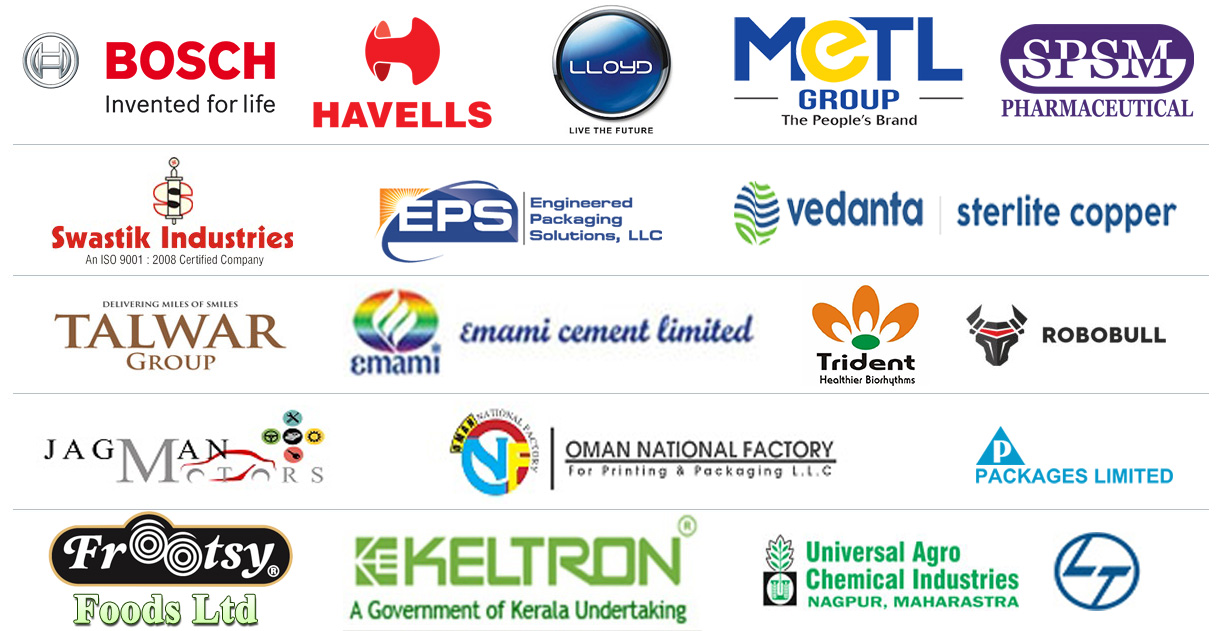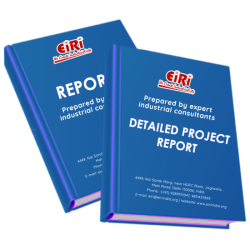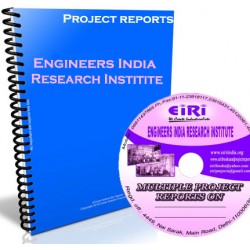quaternary ammonium salt softener (powder form)

- More than 40 years of experience
- Managed by expert industrial consultants
- ISO 9001-2015 Certified
- Registered under MSME, UAM No: DL01E0012000
- 24/5 Research Support
Get your quesries resolved from an industry expert. Ask your queries before report or book purchase. - Custom Research Service
Speak to the our consultant to design an exclusive study to serve your research needs. - Quality Assurance
All reports are prepared by highly qualified consultants & verified by a panel of experts. - Information Security
Your personal & confidential information is safe & secure.
QUATERNARY AMMONIUM SALT SOFTENER (POWDER FORM)
[CODE NO.4431]
A fabric softener (American English) or fabric conditioner (British English) is a conditioner that is applied to laundry during the rinse cycle in a washing machine to reduce harshness in clothes that are dried in air after machine washing. In contrast to laundry detergents, fabric softeners may be regarded as a kind of after-treatment laundry aid.
A wrinkle releaser is a similar, more dilute preparation meant to be sprayed onto fabric directly.
Machine washing puts great mechanical stress on textiles, particularly natural fibers such as cotton and wool. The fibers at the fabric surface are squashed and frayed, and this condition hardens while drying the laundry in air, giving the laundry a harsh feel. Adding a liquid fabric softener to the final rinse (rinse-cycle softener) results in laundry that feels softer.
In the US and UK laundry is mostly dried in mechanical dryers, and the tumbling of the laundry in the dryer has its own softening effect. Therefore, fabric softeners in the US and UK are used rather to impart antistatic properties and a pleasant smell to the laundry. Fabric softeners are usually either in the form of a liquid, which is added to the washing machine during the rinse cycle (either by the machine itself or through use of a dispensing ball); or as a dryer sheet which is added to the moist laundry at the beginning of the dryer cycle. Liquid fabric softeners can be added manually during the rinse cycle or automatically if the machine has a dispenser designed for this purpose. Liquid fabric softeners may also be poured onto a piece of laundry to be dried, such as a wash cloth, and it will be distributed as the laundry is tumbled.
Fabric softeners coat the surface of a fabric with chemical compounds that are electrically charged, causing threads to "stand up" from the surface and thereby imparting a softer and fluffier texture. Cationic softeners bind by electrostatic attraction to the negatively charged groups on the surface of the fibers and neutralize their charge. The long aliphatic chains then line up towards the outside of the fiber, imparting lubricity.
Fabric softeners impart antistatic properties to fabrics, and thus prevent the build-up of electrostatic charges on synthetic fibers, which in turn eliminates fabric cling during handling and wearing, crackling noises, and dust attraction. Also, fabric softeners make fabrics easier to iron and help reduce wrinkles in garments. In addition, they reduce drying times so that energy is saved when softened laundry is tumble-dried. Additionally, they can also impart a pleasant fragrance to the laundry.
Cationic Fabric Softeners
Rinse-cycle softeners usually contain cationic surfactants of the quaternary ammonium type as the main active ingredient. Cationic surfactants adhere well to natural fibers (wool, cotton), but less so to synthetic fibers. Cationic softeners are incompatible with anionic surfactants in detergents because they combine with them to form a solid precipitate. This requires that the softener be added in the rinse cycle. Fabric softener reduces the absorbency of textiles, which adversely affects the function of towels and microfiber cloth.
Formerly, the active material of most softeners in Europe, the United States, and Japan, was distearyldimethylammonium chloride (DSDMAC) or related quat salts. Due to their poor biodegradability, such tallow-derived compounds were replaced by the more labile ester-quats in the 1980s and 1990s.
Conventional softeners, which contain 4–6% active material, have been partially replaced in many countries by softener concentrates having some 12–30 % active material.
Cationic Surfactants Used As Fabric Softeners
Diethyl ester dimethyl ammonium chloride (DEEDMAC)
TEAQ (triethanolamine quat)
HEQ (Hamburg esterquat)
Distearyldimethylammonium chloride (DSDMAC)
Anionic fabric softeners
Anionic softeners and antistatic agents can be, for example, salts of monoesters and diesters of phosphoric acid and the fatty alcohols. These are often used together with the conventional cationic softeners. Cationic softeners are incompatible with anionic surfactants in detergents because they combine with them to form a solid precipitate. This requires that they be added in the rinse cycle. Anionic softeners can combine with anionic surfactants directly. Other anionic softeners can be based on smectite clays. Some compounds, such as ethoxylated phosphate esters, have softening, anti-static, and surfactant properties.
COST ESTIMATION
Plant Capacity 3 Ton/Day
Land & Building (700 sq.mt.) Rs. 1.97 Cr
Plant & Machinery Rs. 31 Lac
Working Capital for 2 Months Rs. 1.94 Cr
Total Capital Investment Rs. 4.30 Cr
Rate of Return 49%
Break Even Point 38%
- INTRODUCTION
- CATIONIC FABRIC SOFTENERS
- CATIONIC SURFACTANTS USED AS FABRIC SOFTENERS
- DIETHYL ESTER DIMETHYL AMMONIUM CHLORIDE (DEEDMAC)
- TEAQ (TRIETHANOLAMINE QUAT)
- HEQ (HAMBURG ESTERQUAT)
- DISTEARYLDIMETHYLAMMONIUM CHLORIDE (DSDMAC)
- ANIONIC FABRIC SOFTENERS
- ROLE OF SOFTENERS IN TEXTILE PROCESSING
- NON-IONIC SOFTENERS:
- ADVANTAGES
- DISADVANTAGES
- ANIONIC SOFTENERS:
- ADVANTAGES
- DISADVANTAGES
- CATIONIC SOFTENERS:
- ADVANTAGES
- DISADVANTAGES
- USES AND APPLICATION
- MARKET OVERVIEW OF SOFTENER
- KEY PLAYERS:
- GLOBAL QUATERNARY AMMONIUM MARKET
- MARKET-O-NOMICS
- DETAILS OF QUATERNARY AMMONIUM SALT SOFTENER MANUFACTURE
- TYPICAL IMIDAZOLINIUM SOFTENING COMPOUNDS INCLUDE:
- TYPICAL QUATERNARY AMMONIUM SALTS OF FORMULA (2) INCLUDE THE FOLLOWING:
- EXAMPLE 1
- FORMULATION OF QUATERNARY AMMONIUM SALT SOFTENER (POWDER FORM)
- PROCESSES AND FORMULATION OF FABRIC SOFTENER
- FABRIC SOFTENER
- EXAMPLE 1
- A FIRST EXAMPLE OF A LIQUID FABRIC SOFTENER COMPOSITION:
- EXAMPLE 2
- A SECOND, FRAGRANCE-FREE, EXAMPLE OF A LIQUID FABRIC SOFTENER COMPOSITION:
- EXAMPLE 3
- A THIRD EXAMPLE OF A LIQUID FABRIC SOFTENER COMPOSITION:
- EXAMPLE 4
- A FOURTH EXAMPLE OF A LIQUID FABRIC SOFTENER COMPOSITION:
- EXAMPLE 5
- A FIFTH EXAMPLE OF A LIQUID FABRIC SOFTENER COMPOSITION:
- PRINCIPLES OF PLANT LAYOUT
- STORAGE LAYOUT:
- EQUIPMENT LAYOUT:
- SAFETY:
- PLANT EXPANSION:
- FLOOR SPACE:
- UTILITIES SERVICING:
- BUILDING:
- MATERIAL-HANDLING EQUIPMENT:
- RAILROADS AND ROADS:
- MAJOR PROVISIONS IN ROAD PLANNING FOR MULTIPURPOSE SERVICE ARE:
- PLANT LOCATION FACTORS
- PRIMARY FACTORS
- 1. RAW-MATERIAL SUPPLY:
- 2. MARKETS:
- 3. POWER AND FUEL SUPPLY:
- 4. WATER SUPPLY:
- 5. CLIMATE:
- SPECIFIC FACTORS
- 6. TRANSPORTATION:
- A. AVAILABILITY OF VARIOUS SERVICES AND PROJECTED RATES
- 7. WASTE DISPOSAL:
- 8. LABOR:
- 9. REGULATORY LAWS:
- 10. TAXES:
- 11. SITE CHARACTERISTICS:
- 12. COMMUNITY FACTORS:
- 13. VULNERABILITY TO WARTIME ATTACK:
- 14. FLOOD AND FIRE CONTROL:
- EXPLANATION OF TERMS USED IN THE PROJECT REPORT
- 1. DEPRECIATION:
- 2. FIXED ASSETS:
- 3. WORKING CAPITAL:
- 4. BREAK-EVEN POINT:
- 5. OTHER FIXED EXPENSES:
- 6. MARGIN MONEY:
- 7. TOTAL LOAD:
- 8. LAND AREA/MAN POWER RATIO:
- PROJECT IMPLEMENTATION SCHEDULES
- INTRODUCTION
- PROJECT HANDLING
- PROJECT SCHEDULING
- PROJECT CONSTRUCTION SCHEDULE
- TIME SCHEDULE
- SUPPLIERS OF RAW MATERIALS
- SUPPLIERS OF PLANT AND MACHINERY
APPENDIX – A:
01. PLANT ECONOMICS
02. LAND & BUILDING
03. PLANT AND MACHINERY
04. OTHER FIXED ASSESTS
05. FIXED CAPITAL
06. RAW MATERIAL
07. SALARY AND WAGES
08. UTILITIES AND OVERHEADS
09. TOTAL WORKING CAPITAL
10. TOTAL CAPITAL INVESTMENT
11. COST OF PRODUCTION
12. TURN OVER/ANNUM
13. BREAK EVEN POINT
14. RESOURCES FOR FINANCE
15. INSTALMENT PAYABLE IN 5 YEARS
16. DEPRECIATION CHART FOR 5 YEARS
17. PROFIT ANALYSIS FOR 5 YEARS
18. PROJECTED BALANCE SHEET FOR (5 YEARS)
How to Make Project Report?
Detailed Project Report (DPR) includes Present Market Position and Expected Future Demand, Technology, Manufacturing Process, Investment Opportunity, Plant Economics and Project Financials. comprehensive analysis from industry covering detailed reporting and evaluates the position of the industry by providing insights to the SWOT analysis of the industry.
Each report include Plant Capacity, requirement of Land & Building, Plant & Machinery, Flow Sheet Diagram, Raw Materials detail with suppliers list, Total Capital Investment along with detailed calculation on Rate of Return, Break-Even Analysis and Profitability Analysis. The report also provides a birds eye view of the global industry with details on projected market size and then progresses to evaluate the industry in detail.
We can prepare detailed project report on any industry as per your requirement.
We can also modify the project capacity and project cost as per your requirement. If you are planning to start a business, contact us today.
Detailed Project Report (DPR) gives you access to decisive data such as:
- Market growth drivers
- Factors limiting market growth
- Current market trends
- Market structure
- Key highlights
Overview of key market forces propelling and restraining market growth:
- Up-to-date analyses of market trends and technological improvements
- Pin-point analyses of market competition dynamics to offer you a competitive edge major competitors
- An array of graphics, BEP analysis of major industry segments
- Detailed analyses of industry trends
- A well-defined technological growth with an impact-analysis
- A clear understanding of the competitive landscape and key product segments
Need Customized Project Report?
- Ask for FREE project related details with our consultant/industry expert.
- Share your specific research requirements for customized project report.
- Request for due diligence and consumer centric studies.
- Still haven't found what you're looking for? Speak to our Custom Research Team
About Engineers India Research Institute:
Note: We can also prepare project report on any subject based on your requirement and country. If you need, we can modify the project capacity and project cost based on your requirement.
Our Clients

Our Approach
- Our research reports comprehensively cover Indian markets (can be modified as per your country), present investigation, standpoint and gauge for a time of five years*.
- The market conjectures are produced on the premise of optional research and are cross-accepted through associations with the business players
- We use dependable wellsprings of data and databases. What's more, data from such sources is handled by us and incorporated into the report
Why buy EIRI reports?
- Our project reports include detailed analysis that help to get industry Present Market Position and Expected Future Demand.
- Offer real analysis driving variables for the business and most recent business sector patterns in the business
- This report comprehends the present status of the business by clarifying a complete SWOT examination and investigation of the interest supply circumstance
- Report gives investigation and top to bottom money related correlation of real players/competitors
- The report gives gauges of key parameters which foresees the business execution























